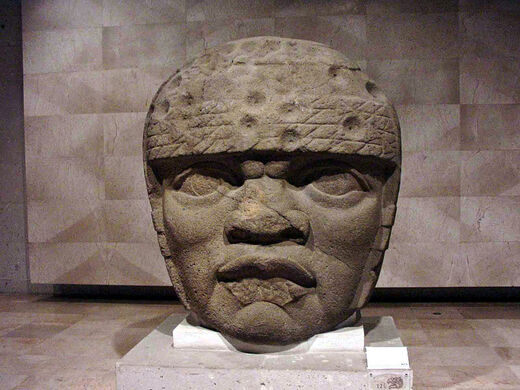Xalapa Museum of Anthropology
XALAPA-ENRÍQUEZ, MEXICO
The largest collection of artifacts from the Olmec civilization, the mother culture of Mesoamerica.

The fascinating anthropology museum in Xalapa houses a staggering collection of over 25,000 artifacts representing a diverse array of cultures, from the Aztec to the Huastec, Totonac, and Mayan civilizations. But the most significant exhibits are undoubtedly those from the enormous collection of artifacts belonging to the mother civilization of Mesoamerica, the Olmeca.
The Olmeca was the earliest known complex civilization to emerge in Mesoamerica and the wider Americas. It arose around 1600 to 1500 BC on the tropical Golf coast of what is now the Mexican state of Veracruz. There, the Olmecs were able to cultivate numerous agricultural crops such as maize, squash, beans, and chilis on a large scale, thanks to the hospitable climate of the region and the fertile soils of the Coatzacoalcos riverbanks.
With agriculture and fixed settlement, the culture gradually became more technologically and culturally sophisticated. The population swelled in number, and elite classes and trade networks began to form. Religions became instituted through the construction and veneration of monuments and art, and the cultural influence of the Olmecs began to spread across the region. This first tentative blossoming of a complex society became the progenitor of all later Mesoamerican civilizations, including the Aztecs and the Mayans.
But in spite of the importance of the Olmecs in Mesoamerican history, little is known about this enigmatic civilization. In the absence of written records archeologists must try to decipher the history of this most mysterious of peoples from the abundant artifacts that have been discovered in the humid verdant jungles of Veracruz. And some of the most remarkable finds that have been unearthed from ancient Olmec sites are the famous and enigmatic colossal head sculptures.
Examples of these gigantic sculptures, intricately carved from basalt boulders, can be seen at the of Xalapa Museum of Anthropology. They are thought to be depictions of ancient Olmec warrior rulers, who may have been worshipped as living gods. Even today, thousands of years later, these giant artifacts are imbued with undeniable expressive power and menace. From the steely and resolute facial expressions, the broken war-scarred noses resemble that of a seasoned professional boxer, while the glaring eyes radiate a fierce commanding presence. It is clear when seeing these ornate objects up close that if they indeed served as effigies of rulers, then these were immensely powerful people who were not, under any circumstance, to be messed with.
More:
https://www.atlasobscura.com/places/xalapa-museum-of-anthropology
